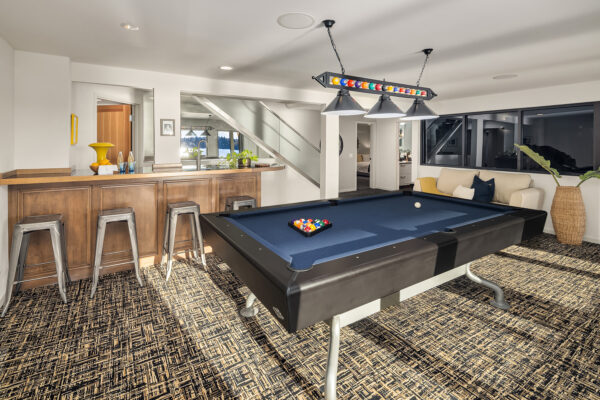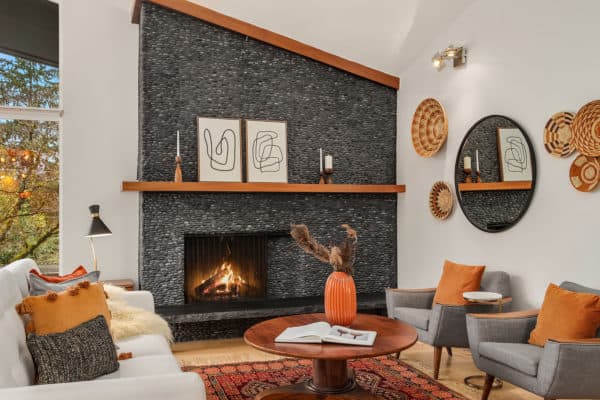Just the word itself, organization, can be nerved racking for many people. The task of organizing a home or any space in general can be overwhelming for the beginners. But by breaking down the tasks into smaller chucks, most people can organize their homes and keep it that way. Below are room by room simple steps to creating an organized home.
Defining every space for every task will help you and your family to keep the home organized.
1. Garage
A. Set up activity zones in the garage. For example, group garden tools in one spot, sporting goods in another, and tools in their own area.
B. Using the walls (vertical space) and the ceiling (over head storage) will help you make better use of the space you do have within your garage. Use various storage solutions such as peg boards, containers (see-through and labels make it easy), and open crates which allow for easy access and easy cleaning. Do not use cardboard boxes because of water damage, mold and bugs.
2. Kitchen
A. Clear up your countertops. Put items and appliances that are not used on a regular basis into drawers or cabinets. Take a look at your small appliances and if you haven’t used an item in the past 12 months, it might be time to donate it to charity or give it to a friend who could use it. This also works with all the little gadgets such as lemon zesters and melon ballers that might not be being used and may be contributing to clutter in the drawers. Empty the contents of a drawer into a box and put it into your garage or a closet. If you need an item, go get it, use it, and put it back in the drawer. Determine a time to clean out the box (such as a month, 3 months, 6 months or even a year) and donate what is left in the box to charity.
B. Arrange zones or stations in the kitchen to make your life simpler and easier. For example, coffee, filters, mugs and the coffee maker should be near each other to make it easy and convenient when making coffee in the morning. Another zone may be your baking zone. Include baking supplies like flour and sugar, cookie sheets, measuring cups, etc.
3. Dining Room
A. Do you frequently have stuff piled up on your dining room table? Determine what the items are and what solutions can be made to conquer the clutter so you and your family can sit down and share a meal. For example, do you use the table for hobbies such as scrapbooking? Make sure you have a solution for your scrapbooking supplies such as a plastic drawer system on wheels. Does your table get piled with mail and other papers? Designate a basket or wall folder system to hold all the papers, magazines, and newspapers that come into the house. Make sure you dump the junk mail as soon as it arrives and empty the basket on a daily basis.
B. If you do not already use a china cabinet or other separate storage system for fine china, this is something you might consider. And depending on your lifestyle, you might even want to have a separate storage area for your everyday dishes. An area for plastic dishes that are within your child’s reach can make it easier for him to set the table for dinner all by himself.
4. Living or Family Room
A. Multi-purpose furniture such as coffee tables, storage cubes or ottomans with storage inside can provide easy access to children’s toys, extra blankets and pillows, board games and other items while greatly reducing clutter.
B. List all the purposes and activities that will take place in the room and divide your living room into zones. Find storage solutions for your TV and games. Store DVDs/games in a cabinet or shelving system that will help keep out dust. Place all remotes in a basket in a central location.
5. Office
A. Keep your most-often used items within arm’s reach. For example, objects used daily such as pens and pencils, a stapler and your calendar should be kept on your desk while items such as scotch tape and paper clips that may only be used occasionally can be kept in a nearby drawer. Find an area to store extra supplies such as printer and fax machine paper such as a closet organization system, a shelving system or plastic drawer.
B. Sort and file paperwork. For sorting large amounts of paperwork the RAFT method can be useful. The R stands for papers that need to be Read. The A stands for papers that need to be Acted upon such as a party invitation that needs to be responded to. The F stands for Filed, such as already paid bills. The T stands for papers that can be trashed such as junk mail.
6. Kid’s Bedroom
A. Sort your children’s toys into separate piles. For those with broken or missing parts, make a decision as to whether the toy is still safe, useable, or repairable. If not throw it in the garbage. If there are toys that your child has outgrown, decide what you are going to do with them. They can be passed on to a younger brother or sister, cousin, family friend or donated to a local charity or women’s shelter. They could also be given away on a website such as Freecycle or Craigslist. Next you need to find a storage solution for the children’s toys that you are going to keep. Plastic drawers and shelves are good options.
B. Make sure organization tools are easy to use and at a child’s level. For example, hooks can be lowered to accommodate book bags, hats, bags, scarves and more on the back of their bedroom door or in their rooms. Another important tool is to label storage solutions with both pictures and words– especially for those who are too young to read.
7. Master Bedroom
A. Re-organize your closet space. Remove excess items and donate items that others can use. Discard stained or damaged clothing. Double the space in your closet by adding a second rod for part of your closet. Keep an area for long hanging items such as gowns or suits. Use the full height of your closet. Maybe there is room for a shelf or two for out of season storage for clothing or linens. Have a basket, bin or container to put items that need to be dry-cleaned and another one for items that need to be mended. Invest in a shoe storage solution.
B. Use all free space such as under the bed for extra linens or out-of season clothing or shoe storage. There are many shallow bins or bags that can be used for this purpose.
8. Bathroom
A. Organize and de-clutter all the items on your counters and surrounding your sink in the bathroom. Do you need three different types of hair gel or can you consolidate them down to one bottle instead? Go through all the different bottles and throw out anything with only a drip left in the bottom as well as those items you do not use on a daily basis. Any unopened items that are no longer wanted, including hotel samples, can be donated to a homeless or women’s shelter. Get a small shelf, small plastic drawer system or a decorative basket for each person to contain their daily products.
B. De-clutter your medicine cabinet. Keep in mind that many medications are affected by the steam and moisture in the bathroom. Use a shower holder or caddy to hold your bath supplies in the shower or bath tub.
9. Attic
A. Use plastic containers instead of cardboard boxes to help avoid bugs and moisture attacking the contents of the boxes. Clear plastic or clearly labeled containers will keep you organized and reduce time and clutter when searching for a particular item.
B. Keep like items together in zones. Have zones for holiday decorations, sentimental items, keepsakes, crafts, sports equipment, etc.
10. Laundry Room
A. There are many different options for laundry hampers or laundry sorters depending on your space. Some even fold flat when not being used. If you provide an easy place for your family to put their laundry, they will be more likely to use it. Who knows? Maybe they will even help do the laundry!
B. Use the space above the washer and dryer. Install and use shelving or cabinets to hold laundry cleaning supplies such as laundry soap, fabric softener and stain removers. On the wall or inside the cabinet, tape up a copy of stain removal and fabric care instructions.
Feel free to share this post:



